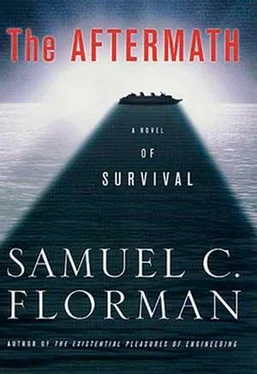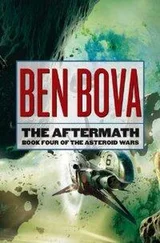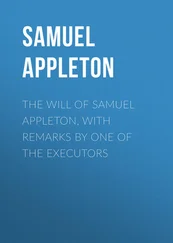Samuel Florman - The Aftermath
Здесь есть возможность читать онлайн «Samuel Florman - The Aftermath» весь текст электронной книги совершенно бесплатно (целиком полную версию без сокращений). В некоторых случаях можно слушать аудио, скачать через торрент в формате fb2 и присутствует краткое содержание. Город: New York, Год выпуска: 2001, ISBN: 2001, Издательство: Thomas Dunne books, Жанр: sf_postapocalyptic, на английском языке. Описание произведения, (предисловие) а так же отзывы посетителей доступны на портале библиотеки ЛибКат.
- Название:The Aftermath
- Автор:
- Издательство:Thomas Dunne books
- Жанр:
- Год:2001
- Город:New York
- ISBN:0-312-26652-9
- Рейтинг книги:5 / 5. Голосов: 1
-
Избранное:Добавить в избранное
- Отзывы:
-
Ваша оценка:
- 100
- 1
- 2
- 3
- 4
- 5
The Aftermath: краткое содержание, описание и аннотация
Предлагаем к чтению аннотацию, описание, краткое содержание или предисловие (зависит от того, что написал сам автор книги «The Aftermath»). Если вы не нашли необходимую информацию о книге — напишите в комментариях, мы постараемся отыскать её.
The Aftermath — читать онлайн бесплатно полную книгу (весь текст) целиком
Ниже представлен текст книги, разбитый по страницам. Система сохранения места последней прочитанной страницы, позволяет с удобством читать онлайн бесплатно книгу «The Aftermath», без необходимости каждый раз заново искать на чём Вы остановились. Поставьте закладку, и сможете в любой момент перейти на страницу, на которой закончили чтение.
Интервал:
Закладка:
The naming contest attracted a lot of attention. The final selection, proposed by an anonymous member of the ship’s orchestra, and then unanimously supported by the entire crew of the Queen of Africa was “Engineering Village.” Wilson Hardy and the rest of the engineers and their families were deeply touched. Hardy himself had proposed “Scandinavia South,” in honor of Captain Nordstrom, his officers, and the crew. Other suggestions that received honorable mention: Prevail, Memorial, New Hope, Miami Beach East, Richards Bay Redux, and Little China. But Engineering Village it was. It remained to create a place to go with the name.
The only building materials available within a practical distance, aside from driftwood, were grasses, shrubs, bamboo, and short, slim trees that had survived the tsunami by bending before its power. The civil engineers and military people knew a lot about tents and framed structures. They were even ready to launch into building log cabins, if there were any logs to be found. But they had a difficult time figuring out how best to utilize the rather flimsy materials at hand. The problem was solved one morning when a group of Zulu specialists arrived on the scene. General White and his Corps of Engineers colleagues, dubious at first, soon came to the conclusion that this was a banner day in the history of construction engineering.
The traditional Zulu dwelling, the indlu, has an archetypal beehive shape. A number of pliable sapling trunks or branches are stuck in the ground, and then fastened together at the top to form a dome. These are covered with a woven grass mat, and then thatch is added. Grass roping is used to bind the structure together. Thus, delicate boughs and natural threads are made into solid and utilitarian structures. The concept of building an idlu is simple enough; but the skills exhibited by the visiting master builders impressed the Westerners as wondrous to behold.
The floor of these dwellings is traditionally made from crushed termite soil, or anthill material, mixed with clay and cow dung. The survivors made do with sand and pounded dirt, and most of them felt that this was just as well. But some of the more adventurous young people later found out that floors made of a cow dung paste dry to a hard, smooth surface, not at all malodorous or unpleasant in any way. The early Boers learned this technique from the Zulus. They also adopted the use of thatch for roofing. For walls, however, they made use of mud bricks, baked hard in the sun. The Engineering Villagers were determined, eventually, to make bricks in kilns and to build more conventional row houses with cornered rooms; but they were grateful indeed for the interim use of the beehive dwellings.
However, one feature of the new environment had a depressing effect. This was the almost total lack of greenery. First on the ocean beach, and then on the shore of Lake Mzingai, the newcomers lived in a world of sand and dried mud underfoot and blue emptiness above. The shrubs and grasses that survived the tsunami—those not uprooted for use as building materials—were terribly sparse. The citizens of Engineering Village craved the sight of lawns and trees and thirsted for natural shade. Perhaps in good time…
Even as immediate needs were addressed, the leaders determined to push ahead with plans for industrial development. There was hardly any talk about Utopian schemes or “new world” concepts. The members of the Ulundi Indaba were just as anxious as the Governing Council to work their way back into the twenty-first century as quickly as possible. Rebuilding and technological rehabilitation—these were the implicitly accepted goals of the survivor society.
Several elders among the Zulus urged a low-technology approach. In this they were joined by a few spiritually inclined members of the white community and a small number of Hindus and fundamentalist Muslims. Yet the overwhelming majority of the people were instinctively, vigorously, impatiently hoping to return to the physical environment they had known. And, even more ur gently, to the future they had been trying to build before the Event destroyed their world. For fifteen years, since the first democratic elections of 1994, the South African politicians had been promising decent housing, clean water, and electricity for all. This dream—mundane, perhaps, but powerfully compelling—had come through fire and flood unscathed. Disappointing as it might have been to the philosophically inclined, given the opportunity to build a new world, the vast majority of the people, without hesitation, chose to resume building the world to which they had previously aspired.
To move speedily from purpose to action, leaders of the Ulundi Indaba and the Governing Council agreed to form a Coordinating Committee. Inevitably, the first action of the Coordinating Committee was to appoint a Joint Planning Subcommittee to work on specific planning and allocation of resources. Among the engineering group there was some cynical grumbling about “creeping bureaucracy,” even in these dire circumstances. But it was clear to most that a modicum of bureaucratic organization was needed.
Twenty-six days after the Event, ten days after Gustafsson’s arrival in Ulundi, the Joint Planning Subcommittee held its first meeting. The date, as recorded in the minutes, was January 20, 2010/Year 1.
The subcommittee, for the sake of efficiency, was limited to thirty members, fifteen from the Queen of Africa and fifteen from the Inlanders. As with the Governing Council, experts were to be invited to specific meetings according to the topics being considered. Suggestions from the “public” were to be handled as candidly as possible in designated open sessions. Since most of the technical authorities were members of the shoreside community, and since the Ulundi people were better equipped to travel than the engineers, the initial meetings were held in Engineering Village.
One of the first structures planned and erected in the new municipality was a large pavilion intended to accommodate group meetings. For this assembly hall the builders made use of materials cannibalized from two lifeboats that had been damaged during the salvage operation. The structural frame consisted of an odd assortment of wooden shapes—oars, spars, masts, and planks—plus a few lengths of bamboo, with a roof made mostly of thatch. Serendipitously, it looked like a work of art, or—depending on one’s taste—the product of the freshman class at a second-rate school of architecture.
“Beehive huts may be good for sleeping,” said Wilson Hardy, who had ordered the new facility’s erection, “and that rickety canvas-covered shanty on the landing beach was okay for early days. But when this select subcommittee holds a meeting, I want it to be in classy digs.”
As recording secretary of the Governing Council, Wilson Hardy, Jr., was the logical candidate for the same job with the new group, and sure enough, he was conscripted. He was flattered, but also told his cronies that the Planning Subcommittee was lucky to have him. Since he had studied the history of technology, he knew something of what had been accomplished by past societies, and so felt that he had some sense of what might be rational goals for the new one.
Following Hardy Senior’s recommendation, the subcommittee elected as its chairman Alfred Richards, CEO of a giant international construction company. Alf was a casting director’s idea of a hard-hat—a large man, with a craggy, florid face under a thatch of white hair. His firm had designed and built manufacturing plants in practically every corner of the globe, and what Alf Richards didn’t know about infrastructure, buildings, manufacturing processes, energy systems, and development in general, according to Dr. Hardy, just wasn’t worth knowing. This pragmatic doer of great deeds was under no illusions about where he was starting and what he was lacking. Seeing him in action, an observer might have sworn that he took pleasure in the difficulty. In fact, this unspoken satisfaction was shared by many of his colleagues. The less they had to work with, the more notable would be their achievement.
Читать дальшеИнтервал:
Закладка:
Похожие книги на «The Aftermath»
Представляем Вашему вниманию похожие книги на «The Aftermath» списком для выбора. Мы отобрали схожую по названию и смыслу литературу в надежде предоставить читателям больше вариантов отыскать новые, интересные, ещё непрочитанные произведения.
Обсуждение, отзывы о книге «The Aftermath» и просто собственные мнения читателей. Оставьте ваши комментарии, напишите, что Вы думаете о произведении, его смысле или главных героях. Укажите что конкретно понравилось, а что нет, и почему Вы так считаете.












